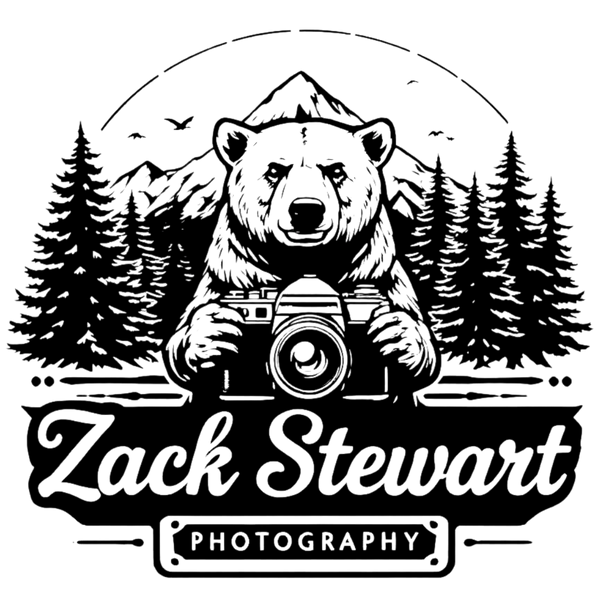Capturing the Night: A Technical Guide to Northern Lights Photography in Alaska
Share
Alaska offers some of the most extraordinary conditions for photographing the aurora borealis, an atmospheric phenomenon caused by the interaction of solar particles with Earth's magnetosphere. While locations such as Fairbanks, Denali, and the Arctic Circle are well-known hotspots, even coastal regions like Ketchikan can provide stunning photographic opportunities under the right conditions. This guide delves into advanced photographic methods and technical considerations for capturing high-quality images of the aurora.
1. Identifying Optimal Shooting Locations
Photographing the aurora requires minimal light pollution and unobstructed views of the sky. Northern latitudes generally provide the most vivid displays, but auroral activity can extend to lower latitudes depending on geomagnetic conditions. In coastal areas, the interplay of aurora reflections on water can enhance compositions. Remote parks, elevated terrains, and lakes can also serve as effective vantage points.
2. Leveraging Solar and Atmospheric Data
Successful aurora photography depends on predicting both geomagnetic activity and meteorological conditions. The planetary K-index (Kp) is a key metric, with higher values indicating stronger auroras visible at lower latitudes. Tools such as the NOAA Space Weather Prediction Center and aurora forecasting applications like My Aurora Forecast provide real-time data. Additionally, monitoring high-altitude cloud cover is crucial, as even minor atmospheric obstructions can diminish visibility.
3. Selecting and Optimizing Camera Equipment
For professional-quality results, a DSLR or mirrorless camera with full manual controls is essential. Key equipment considerations include:
-
Wide-angle lens (14-24mm, f/2.8 or faster): Maximizes field of view and captures faint auroral detail.
-
Sturdy tripod: Necessary for long exposure stability.
-
Remote shutter release or intervalometer: Minimizes vibration and allows for sequential time-lapse photography. Setting a shutter delay can also be used to accomplish this.
-
Multiple batteries: Cold temperatures significantly reduce battery efficiency, so spares should be kept warm in insulated pockets.
-
Lens heaters: Prevent lens fogging in humid or rapidly cooling environments.
4. Advanced Camera Settings for Aurora Imaging
-
ISO Sensitivity: Begin with ISO 1600-3200 and adjust according to brightness and camera noise performance.
-
Shutter Speed: Ranges from 2 to 15 seconds depending on aurora intensity and motion; shorter exposures (2-5s) are preferable for rapidly shifting auroral formations.
-
Aperture: Maintain the widest setting (e.g., f/2.8 or lower, but f/4 can do it, will need to compensate by using higher ISO) to maximize light intake without excessive noise.
-
Manual Focus: Autofocus is ineffective in low-light conditions; use live view to fine-tune focus on a distant star or set the lens to infinity.
5. Composition and Artistic Considerations
-
Foreground Integration: Including mountains, forests, or water surfaces adds depth and scale.
-
Leading Lines and Perspective: Roads, rivers, or silhouetted trees can guide the viewer’s eye toward the aurora.
-
Reflections and Symmetry: Still water sources create opportunities for symmetrical compositions.
-
Exposure Bracketing: Capturing multiple exposures can aid in post-processing and ensure optimal dynamic range.
6. Environmental Considerations and Precautions
Alaskan winters present extreme conditions that can impact both the photographer and equipment. Proper preparation includes:
-
Layered clothing with thermal insulation to withstand subzero temperatures.
-
Gloves with touchscreen compatibility for camera adjustments without exposure to cold.
-
Hand warmers to extend battery life and maintain dexterity.
-
Acclimation time for equipment to prevent lens condensation upon sudden temperature changes.
7. Maximizing Post-Processing Potential
Post-production enhances aurora images by refining color accuracy, contrast, and noise reduction. Key techniques include:
-
RAW file processing: Allows for greater flexibility in adjusting white balance and exposure.
-
Noise reduction algorithms: Software such as Adobe Lightroom or DxO PhotoLab can mitigate high-ISO noise.
-
Tone curve adjustments: Fine-tune contrast to enhance auroral structure without over-saturation.
-
Stacking techniques: Reduces noise by averaging multiple frames while retaining dynamic auroral movement.
Conclusion
Capturing the northern lights requires both technical expertise and environmental awareness. By integrating precise forecasting, optimized camera settings, and compositional artistry, photographers can elevate their aurora photography beyond simple snapshots to compelling, professional-quality images. With patience and preparation, the luminous dance of the aurora borealis can be transformed into a breathtaking visual narrative of Alaska’s night sky.
